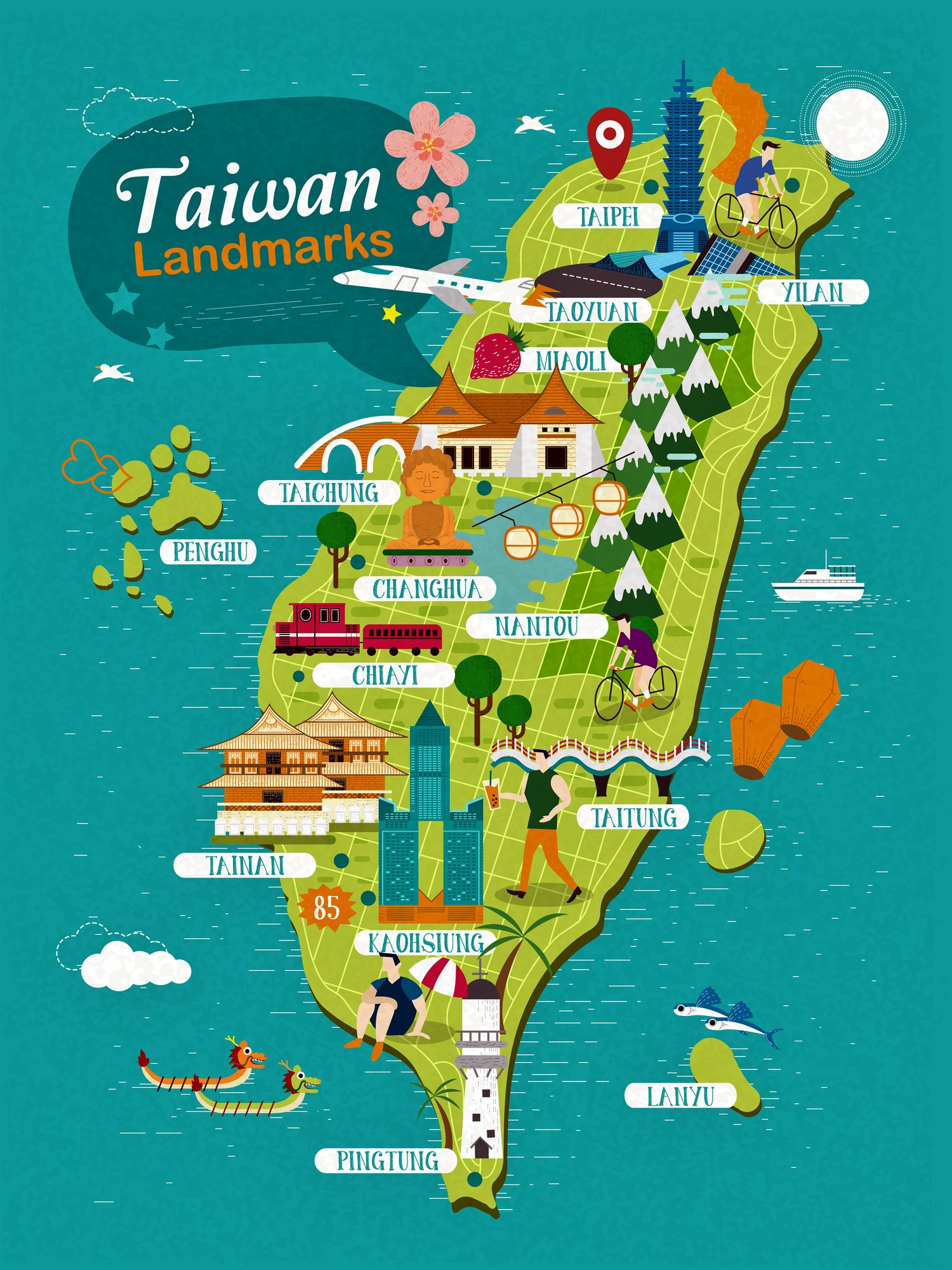| TAIWAN |
| TAIWAN | Picture Description |
|---|---|
 |
Map of TAIWAN
Population : 23,572,052 (July 2021) Median age: 42.3 years Fertility rate: 1.07 children/woman(2021) Currency: Costa Rican Colon GDP per capita: PPP $24,502 (2018) #76 in World GDP per capita: Nominal $24,502 (2018) Population below poverty line: 1.5% Labor force - by occupation: Agriculture 4.9%, Industry 35.9%, Services 59.2% Source : CIA Factbook
|
 |
The National Flag of Taiwan
First inhabited by Austronesian people, Taiwan became home to Han immigrants beginning in the late Ming Dynasty (17th century). In 1895, military defeat forced China's Qing Dynasty to cede Taiwan to Japan, which then governed Taiwan for 50 years. Taiwan came under Chinese Nationalist (Kuomintang, KMT) control after World War II. With the communist victory in the Chinese civil war in 1949, the Nationalist-controlled Republic of China government and 2 million Nationalists fled to Taiwan and continued to claim to be the legitimate government for mainland China and Taiwan based on a 1947 Constitution drawn up for all of China. Until 1987, however, the Nationalist government ruled Taiwan under a civil war martial law declaration dating to 1948. |
 |
Taiwan Landmarks
Location : Taiwan
Beginning in the 1970s, Nationalist authorities gradually began to incorporate the native population into the governing structure beyond the local level.
The democratization process expanded rapidly in the 1980s, leading to the then illegal founding of Taiwan's first opposition party (the Democratic Progressive Party or DPP) in 1986 and the lifting of martial law the following year.
Taiwan held legislative elections in 1992, the first in over forty years, and its first direct presidential election in 1996.
In the 2000 presidential elections, Taiwan underwent its first peaceful transfer of power with the KMT loss to the DPP and afterwards experienced two additional democratic transfers of power in 2008 and 2016.
Throughout this period, the island prospered, became one of East Asia's economic "Tigers," and after 2000 became a major investor in mainland China as cross-Strait ties matured.
The dominant political issues continue to be economic reform and growth as well as management of sensitive relations between Taiwan and China.
|
 |
Taipei Skyline
Location : Taipei
The Taipei Skyline in 2021. Taipei is home to 2,646,000 people (2019) and is the 40th most populous urban area in the world where ~1/3 of the Taiwanese citizens live in the metro district. Taipei is the economic, political, educational and cultural center of Taiwan and one of the major hubs in East Asia.
taiwai has two airports - Songshan and Taoyuan. It has world-famous architectural and cultural landmarks including Taipei 101, Chiang Kai-shek Memorial Hall, Dalongdong Baoan Temple, Hsing Tian Kong, Lungshan Temple of Manka, National Palace Museum, Presidential Office Building and Taipei Guest House. The region known as the Taipei Basin was home to Ketagalan tribes before the eighteenth century. Upon the Japanese defeat in the Pacific War and its consequent surrender in August 1945, the Kuomintang (Chinese Nationalist Party) assumed control of Taiwan.
|